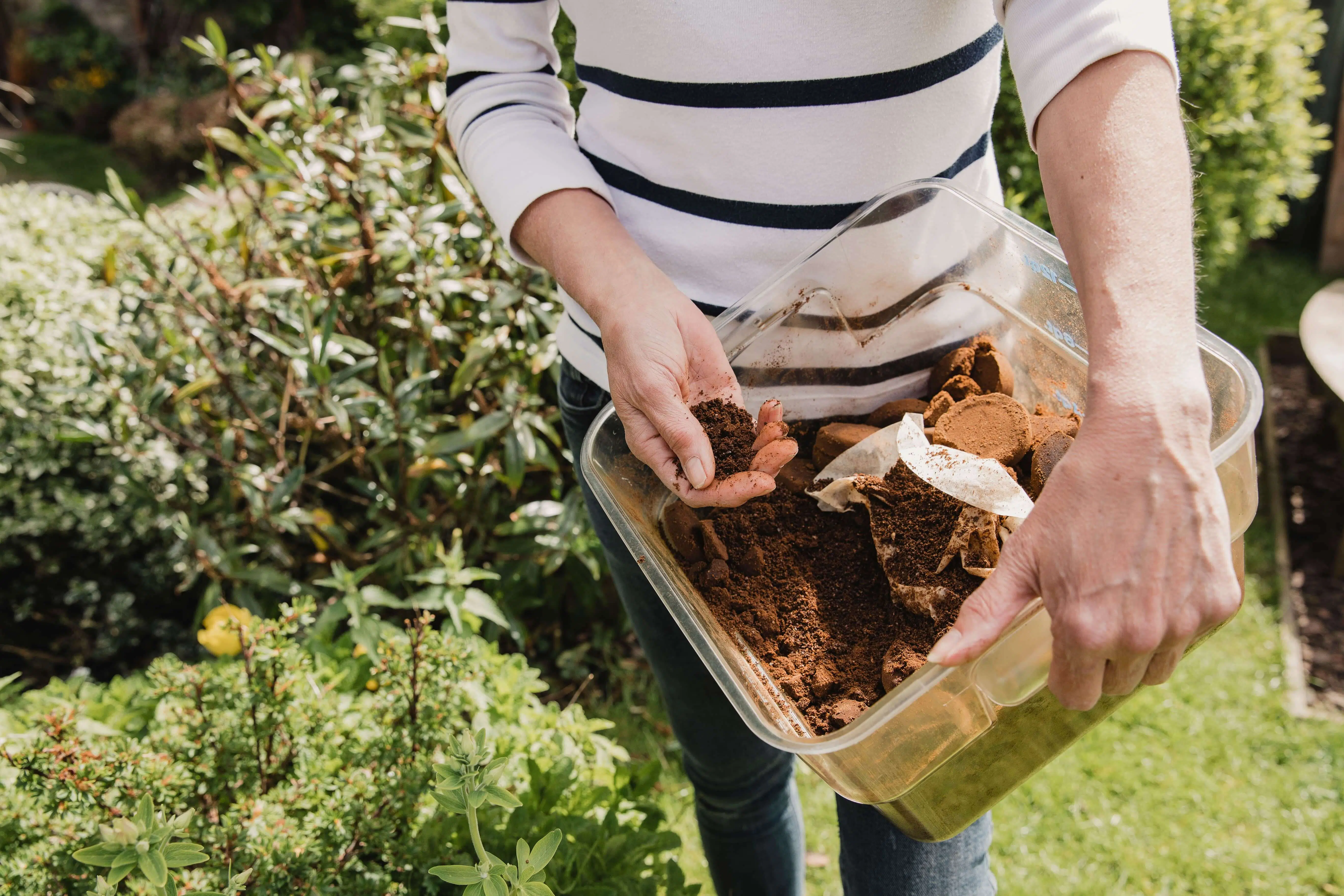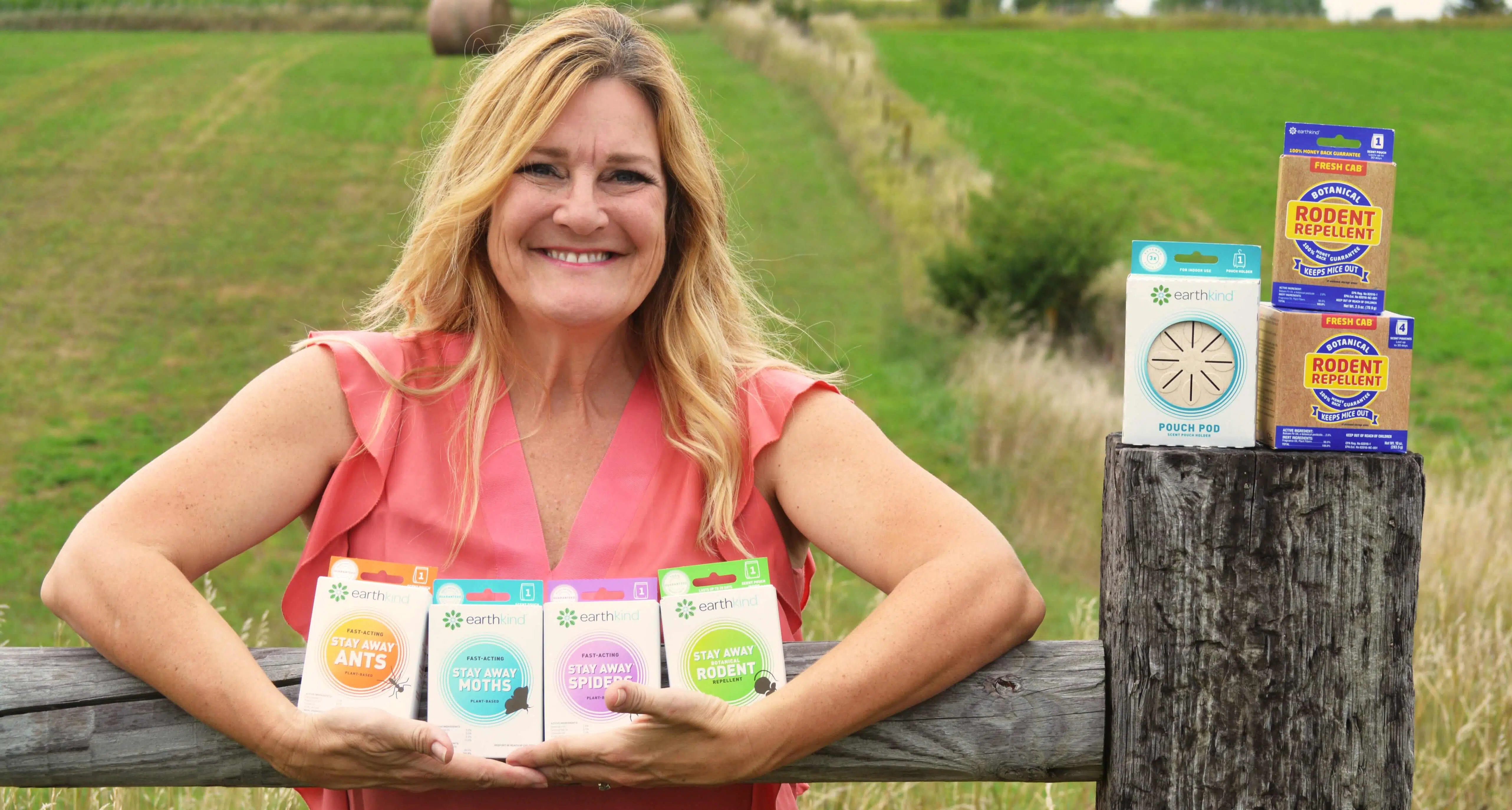Tips for Living a More Sustainable Lifestyle at Home
Sustainability is a major buzzword these days, and for good reason: According to the EPA, the average American person will produce about 5.91 pounds of trash daily, with about 1.51 pounds being recycled; 4.40 pounds is the rough average daily waste. Reducing our carbon footprint is essential for the health and we’ll being of our global community. Unfortunately, sustainability can be difficult to incorporate into our daily lives, as nearly everything we use to feed, clothe and shelter ourselves was built using unsustainable practices.
Long commutes from factory farms, textile mills, oil production fields, cell phone manufactures, and even pest control – nearly every household product we use in our day-to-day lives seems to involve practices that can harm the environment, and our health. Major climate change legislation and action from large corporations could address the worst grievances, yet each of us can also play a part to reduce our overall footprint.
What Does it Mean to Lead a Sustainable Lifestyle?
There is no one path to a sustainable lifestyle, nor is there a particular set of metrics we can use to tell us whether we reach a certain eco-friendly benchmark. Rather, the definition of sustainable varies from one person to the next.
For example: a remote worker with no children, a small apartment, and easy access to public transit will nearly always lead a more sustainable lifestyle than someone with kids (and the diapers, larger homes, and other realities that accompany them) or a need to commute long distances for work. Still, both types of people can take steps to become more sustainable.
No matter who’s definition of sustainability we gravitate to, the ultimate goal is usually to leave the planet better than we found it; by reducing our carbon footprint, limiting how much water we waste, or pollution we generate. This is easier said than done, of course! Yet, with simple, affordable, solutions we can all more easily contribute to a greener environment.
At its best, living a sustainable lifestyle means making the most environmentally friendly decisions each day. Self-reflection is essential — there’s always more to learn and additional changes to be made. Still, any effort is better than none, so you don’t need to aim for perfection just yet:
10 Sustainable Living Ideas at Home
We all like the idea of living more sustainably, yet feel intimidated at the prospect of overhauling your lifestyle. Good news— you don’t need to take drastic measures to have a discernible impact. Yes, big changes are important, yet seemingly small adjustments can also make a world of difference. The following are a few of the best sustainable living ideas that you can implement today:
1. Commit to Sustainable Lawn Care
One of the worst “keeping up with the Joneses” tendencies for Mother Nature? Our need for today’s lawns to resemble perfectly manicured golf courses. We all know that fertilizer and watering to keep up appearances is terrible for the environment. That doesn’t mean you need to give up on maintaining a beautiful lawn— simply do your best to incorporate these eco-friendly solutions:
- Use a push mower (with no motor). Who needs a gym membership when you can get amazing exercise at home? A push mower can do the trick. Manual push reel mowers, in particular, minimize energy consumption. Other perks include less cost, less noise, and easier maintenance than gas-powered counterparts.
- Ditch the chemicals. From killing weeds to promoting green grass, fertilizers and pesticides make your lawn look pristine while actively harming the environment. Many are also personally harmful, with a growing body of research linking such substances to birth defects, cancer, and more. Also, some weeds, such as dandelions, are the only pollinator food that’s available early spring. They’ll eventually go away on their own, so it’s prudent to leave them alone early spring and add a small sign in your yard: pardon the dandelions,”we’re feeding the pollinators, be patient.”
- Plant a rain garden. Do your part to address problematic runoff by planting a rain garden. Gorgeous and effective, these displays limit drainage problems and can even have a positive impact on groundwater. This can also help prevent pest infestations.
2. Compost Food Scraps
What happens to all those banana peels and coffee grounds after you toss them in the trash? Each year in America, 40% of all food that’s produced is placed into (already overfilled) landfills, to create even more greenhouse gasses. Why not use these scraps to produce compost, a natural fertilizer, for your garden? A variety of high-level indoor and outdoor composers are available, making it easy to keep food scraps out of the trash.
A proactive approach is important so you don’t need to dedicate so much food to the compost. Make a list before you visit the grocery store to limit the urge to purchase unneeded items.
3. Start a Garden
Many of the lawn-based environmental concerns mentioned previously also apply to agriculture. Now, add energy-intensive shipping to the mix. With prices at the grocery on the rise, there should be no better incentive to start your own eco-friendly garden to grow a harvest of your own food. Use the compost we’ve previously discussed to give your garden a boost. Plant fruits and vegetables to include in your favorite meals, plus flowers for the sake of local pollinators. Our founder started EarthKind this way, and today the majority of our ingredients are grown on US farms using regenerative and sustainable practices.
3. Recycle Correctly
These days, most people make at least a half-hearted effort to recycle. The problem with recycling, however, is that if done incorrectly, it doesn’t do a whole lot for the environment. Sadly, a significant portion of recycled items ultimately end up in landfills.
Do your part by sorting the recycling as required by your municipality — and by ensuring that you only recycle appropriate types of single-use plastic. Stick with reusable water bottles so you don’t need to use plastic bottles or straws in the first place. Our employee favorites are S’well and Clean Kanteen.
4. Use Eco-Friendly Cleaning Products
If your favorite cleaning products have a long list of ingredients that are difficult to pronounce, it’s time to go simple. Often, the most basic ingredients are the most affordable, effective — and the best for the environment. Vinegar and baking soda are classic options that can transform a filthy space into a pristine environment in most cases.
5. Try Botanical Pest Repellents
When ants, cockroaches, and other pests invade your home, it’s tempting to turn to high-powered aerosol sprays that kill on contact. However, they usually leave a toxic residue in the home that will remain for weeks or months, and yet one more can or bottle in the landfill that will remain for decades. There are 4+ billion cans and plastic containers being put into landfills annually. That’s problematic, as it all disrupts nature’s delicate balance.
Instead, try plant-based preventive options that make your home less appealing to pests in the first place. It’s truly an easy button if you think ahead and utilize this option to prevent infestation, mess, and stress. EarthKind offers easy-to-implement deterrent products that you can place strategically throughout your home to keep pests away.
6. Visit Your Local Thrift Store
Nearly every product you purchase requires intensive energy to produce. What’s more, many items cannot be easily reused or recycled. Try to limit shopping sprees when possible.
Minimalism is always preferable, but you can still treat yourself to new products if you hit up your local secondhand store. This is a great solution not only for avoiding the excesses of fast fashion, but also for purchasing books, toys, and even furniture. Don’t forget to check out tech-based options such as Facebook Marketplace or online zero waste groups.
Our founder has a habit of removing two clothing/decorative/furniture items from her home for every new one she brings in. It’s sustainable, and prevents impulse buying.
7. Stick With High-Efficiency Appliances
Are you currently shopping for a new dishwasher, fridge, or laundry machine? There’s no excuse to purchase anything other than an Energy Star certified appliance. These limit energy consumption, thereby reducing both your carbon footprint and your cost of living. Take a close look not only at the Energy Star label, but also, statistics so you can compare and contrast available models. Often, there’s incentives available that can actually save you money- in both the short and long term.
8. Level Up Your Storage Solutions
Thoughtful organization and storage will prevent you from having to re-purchase items you already own. Airtight containers are especially important for food, birdseed, grass seed, and attract pests, and get easily spoiled when insects or rodents get into it. This is a key preventative method for keeping rodents out of your house — thereby allowing you to avoid the harmful pest control solutions mentioned previously. Rodents can literally smell these food sources from miles away if they’re starving. Don’t make your home, theirs.
9. Ditch the Car Commute
Walkable neighborhoods are increasingly becoming an affordable luxury for renters and homeowners alike. Plus, the benefits are proven: people are healthier and happier when living in harmony with one other, and nature. Living near your workplace is ideal, and remote work makes commuting less essential, so take advantage of tech solutions whenever they’re available and make time for walking, biking, or public transportation; all great alternatives. Even carpooling can be beneficial when other commuting methods aren’t available to you- if you trust and like the people you’re carpooling with.
10. Make the Most of Natural Light
How often do you rely on lamps or overhead lighting? During the day, this approach is incredibly wasteful. Instead, open up your windows and let natural light work its magic. Better yet, spend more time outside! Few natural resources are as abundant or as easily taken advantage of as sunlight. In the evening, try LED light bulbs. The health impacts of this sustainable tip alone will be noticeable and impactful as studies show: https://www.healthline.com/health/natural-light-benefits
Adding Sustainable Practices to Your Lifestyle
You have the power to shape the eco-friendly world of tomorrow. Even modest changes make a huge impact when they’re adopted at a large scale. The goal: less energy, less water, and less waste in general.
Make a daily effort to start small. Begin by committing to just one or two of the ideas mentioned above. Once you realize how easy these suggestions are to implement, you’ll feel motivated to try other green solutions. The pride you take in supporting a brighter future will make the modest effort more than worthwhile.
At EarthKind, we’re here to support your personal eco-friendly initiatives, and it’s always our intention to make it easy and affordable. Our botanical pest prevention products keep insects and rodents from becoming uninvited guests in your home. Contact us today to learn more about our sustainable, plant-based pest control products, along with sustainable & ethical ways of living.







